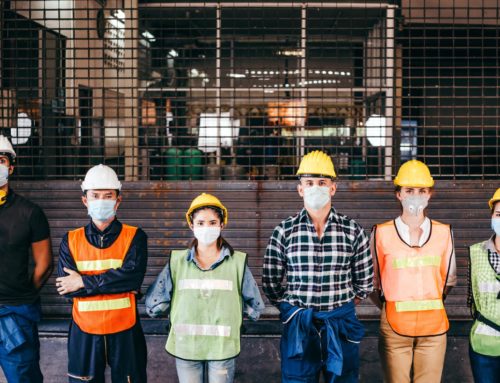Wonolo
If you’re looking for work in the Wonolo app, and have always overlooked warehouse gigs, it’s time to think again. There are many employers offering warehouse roles, and you’ll almost certainly be able to find a warehouse job that meets your skills, fitness level, and capabilities.
Don’t worry, a warehouse role can be easier than you think, and will provide you with some good, basic skills that you can use elsewhere. Plus, with the number of warehouse gigs we have in Wonolo, it’s another great way to boost your experience, and your earnings.
We know that trying out work in a new sector can be overwhelming, so we’re here to bust some warehouse myths, by answering your questions about these in-demand roles.
Let’s get into it.
Do I need special qualifications, certification, or skills for warehouse roles?
No, most warehouse gigs posted on Wonolo do not have specific skill, certification, or qualification requirements. It’s true that there are certain warehouse roles that do need specific certifications — driving a truck, operating a forklift, using specialist or heavy machinery — but in most cases the roles posted on Wonolo are doable by anyone with common sense and a good work ethic.
If there’s a warehouse gig posted on Wonolo that does need special skills or qualifications, we’ll always let you know.
Do I need to be physically fit to do a warehouse role?
You will need to have a basic level of fitness, but not every role in a warehouse is physically demanding. For example, many roles involve picking and packing goods, so you just need to be able to walk fairly quickly, be flexible, choose items, put them in a box, and get it ready for shipping. Other roles are more demanding, and do require more strength and stamina, so be sure you know the likely physical demands of the work.
Where can I expect to work in a warehouse?
There are several areas where you might end up working in a warehouse:
- Incoming goods and stocking shelves — taking goods off of a truck or other shipment and storing them in the warehouse in designated locations.
- Picking, packing, and fulfillment — getting a customer order, identifying the items on the order, picking them from the shelves, and packing them up for distribution.
- Administration and warehouse operations — managing the computer and admin side of warehouse operations, including verifying orders, tracking shipments, etc.
- Add on work — areas like ticketing items, printing shipping labels, putting clothes on hangers, splitting or consolidating shipments, unboxing items, wrapping pallets, cleaning, etc.
- Delivery driving — driving a car or small van for local pickup or delivery of items.
- Reverse logistics — dealing with items that are returned to the warehouse.
There are many other roles in a warehouse, with plenty more variety than you might think.
Will I receive safety and handling training?
Yes. If your role involves lifting, carrying, or otherwise handling large, heavy, bulky, or awkward products, you should receive training. Likewise, all workers should receive health and safety instruction on keeping themselves and others safe in a warehouse environment.
What are some of the most common terms used in warehousing?
As a temporary warehouse employee, here are some of the more common terms.
Inbound and Receiving Orders
Inbound and receiving orders refers to a warehouse or logistics provider arranging for the transport, storage, and management of goods coming into their business.
Picking and Packaging (Pick and Pack)
Picking and packing is a major part of goods receiving and distribution. It involves receiving goods into a warehouse, disassembling containers into relevant products, picking the products for each destination, repacking them, and labelling them for distribution.
Inventory Handling
Handling is the process that logistics providers use to receive, process, store, and distribute products, particularly the packaging and shipping of products and materials.
Inventory Management
Inventory management manages the receipt of goods from manufacturers to warehouses and then from those warehouses to final delivery. Inventory management is normally part of a warehouse and inventory management system.
Order Management and Fulfillment
Order management and fulfillment is the process that turns a request for goods from a customer into a shipping request that delivers goods to the intended destination.
Reverse Logistics
Reverse logistics is about allowing customers to return products that are broken, not fit for purpose, or otherwise not wanted. Reverse logistics handles the returns, refunds, distribution, and what happens with returned inventory, including disposal.
Logistics
Logistics is the whole practice and process of managing the flow of goods between the point of origin and the point of destination to meet the needs of suppliers, vendors, customers, and businesses. Logistics brings together data, transportation, inventory, warehousing, material handling, packaging, and security.
Warehouse Management System
A warehouse management system (WMS) Is the software and process used to control goods from the moment they enter a warehouse until they are distributed and beyond. It mainly controls the movement and storage of products in a warehouse, including ordering, receiving, storage, processing, picking, packing, and distribution.
As you can see, there’s not as much mystery to a warehouse gig as you once thought. The next time you’re looking for a challenging role with plenty of demand, try out a warehouse gig. You’ll be glad you did!


![[Report] Beyond the Gig: Exploring Reliable Work Options for the Modern Workforce](https://info.wonolo.com/wp-content/uploads/2023/10/Worker-Preferences-Report-Header-Image-500x383.png)



